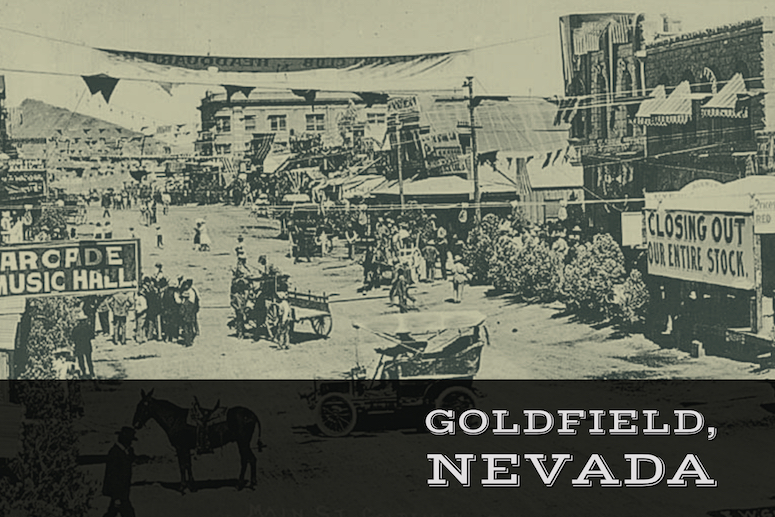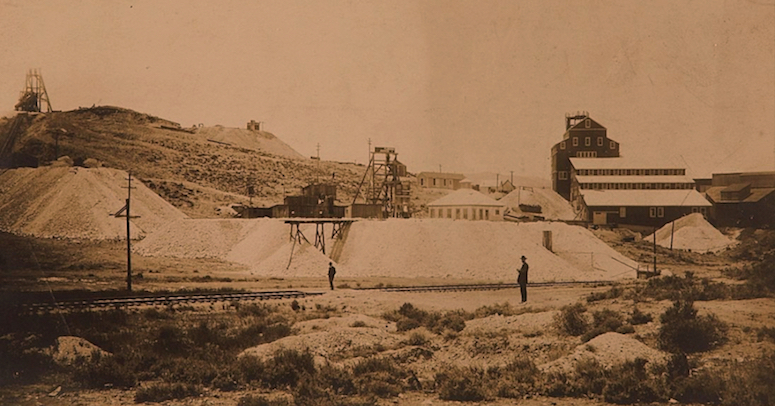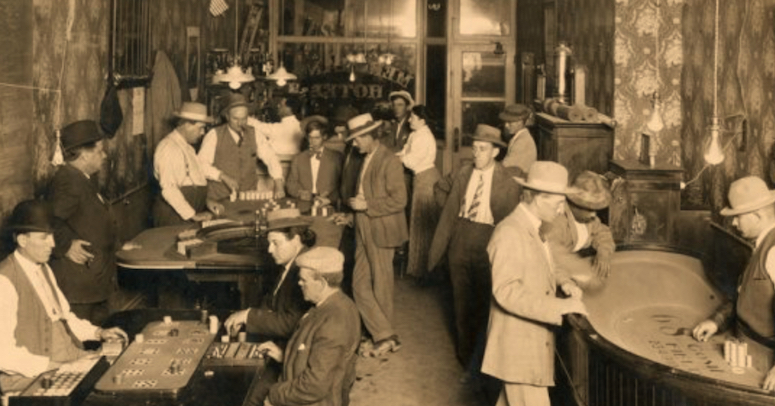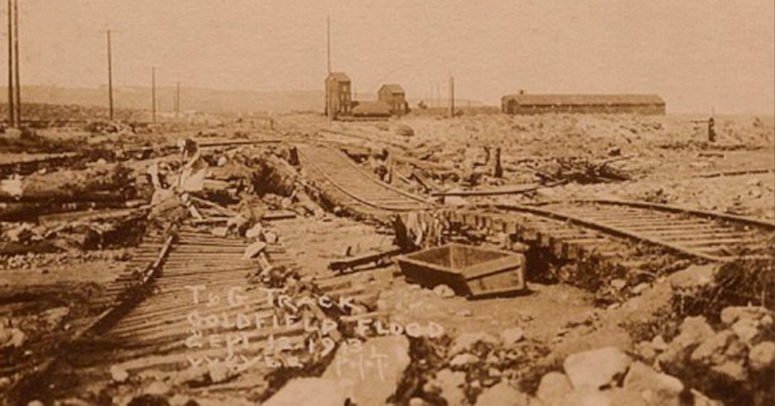
Goldfield, Nevada was an unusual mining camp in that it was not until 1902 that gold was discovered. The district was originally called “Grandpa”, perhaps for the late date of its founding, but was eventually called Goldfield, which became a mining district on October 20, 1903.
Charlie Taylor located the Florence Mine on a hill east of Goldfield in the summer of 1902, and two prospectors by name of Billy March and Harry Stimler found gold south of Tonopah, Nevada. Eventually, Tom Lockhart and A.D. Parker went into partnership with Taylor in, and ultimately acquired the controlling interest in the Florence Mine.
Initially a tent town, those prospectors who had lived through the winter of 1902-1903 began to dig out caves along Coyote Wash, thus protecting themselves from the winter cold and the summer heat. Evidence of these structures have all but disappeared today.
In the spring of 1904, Wyatt and Virgil Earp came to Goldfield, which by now consisted of a grocery store, two feedlots and three saloons. Virgil Earp became deputy sheriff of Goldfield, even though he had a lame arm from a gunshot incurred in 1881 in Tombstone. Wyatt was employed by the Northern Saloon as a pit boss.

The Combination Mine. The rich gold ores were extensive and covered a large area surrounding Goldfield.
By 1905, 5,000 claims had been filed in Goldfield.
Disaster struck in July of 1905, when the millinery shop caught fire due to an exploded stove. As the fire spread throughout the town, there was insufficient water to fight the fire, and beer was used instead to douse the flames. What a loss! Eventually the wind changed, and the fire was brought under control. Homes and businesses on two city blocks burned to the ground before it was put out.
Another welcome addition to Goldfield came in 1905 when the Tonopah & Goldfield Railroad came through town, and by 1906, Goldfield boasted a population of 30,000 and was known as the Queen of the Mining Camps.
Goldfield was producing $10,000 worth of ore per day, and the miners soon organized into a branch of the union – the Western Federation of Miners. Owned by George Wingfield, the Goldfield Consolidated Mines Company was essentially a monopoly, and Wingfield was keen to acquire the Florence Mine as well, but was never able to wrest it from its owners.

Goldfield was a boomtown to rival all others in the West during the early 1900s. Money flowed freely in the saloons…
Eventually the union and the Wingfield would butt heads. Beginning in December of 1906, miners began to strike for better wages. Anxious that his profits not be undermined, Wingfield asked for federal troops to quell the strikes by portraying the situation as potentially dangerous, even though no violence or disruption had occurred. President Roosevelt ordered 300 federal troops to Goldfield from San Francisco. Wages for the miners were immediately lowered and miners were informed that no member of the union would be eligible to be employed by the mine.
Goldfield sported the opulent Goldfield Hotel, built in 1908 at a cost of over a quarter of a million dollars, and it offered all the modern conveniences of the day – telephones, steam heat and electric lights, along with European chefs. Being the most elegant hotel between San Francisco and Chicago, it was a popular destination for those who could afford it, and it made George Wingfield even richer.
As with every other gold town, the prosperity did not last and the population had dropped by 1910 to 5,000 people. Gold production had hit its peak of 11 million dollars each year to only five million per year in 1912.
Goldfield was further devastated on September 13, 1913 when the town was flooded by torrential rain. Homes and businesses by the hundreds were all swept away, as well as numerous caches of gold. People searched for years for reported bags and safes full of gold that was swept away, but other than a nugget here and there, nothing of substance was ever found.

Goldfield after the flood.
Mining continued, but the mines yielded 1.5 million worth of ore in 1918, and that dwindled to half the following year. In the following three years only $150,000 worth of ore was taken from the mines and the town had shrunk to 1,500 people.
Goldfield couldn’t be called the luckiest of towns, as a moonshine still near the Goldfield Hotel exploded early on the morning of July 6, 1923. Unfortunately, it was an extremely windy day and it took 13 hours to bring the fire under control. Twenty seven city blocks were burned to the ground, and this time the town could not recover..
Mining operations ceased in 1947, but between 1903 and 1940, the mines of Goldfield yielded over $86 million dollars.
Next: Gold & Silver Strikes in Nevada – 11 Spectacular Discoveries

